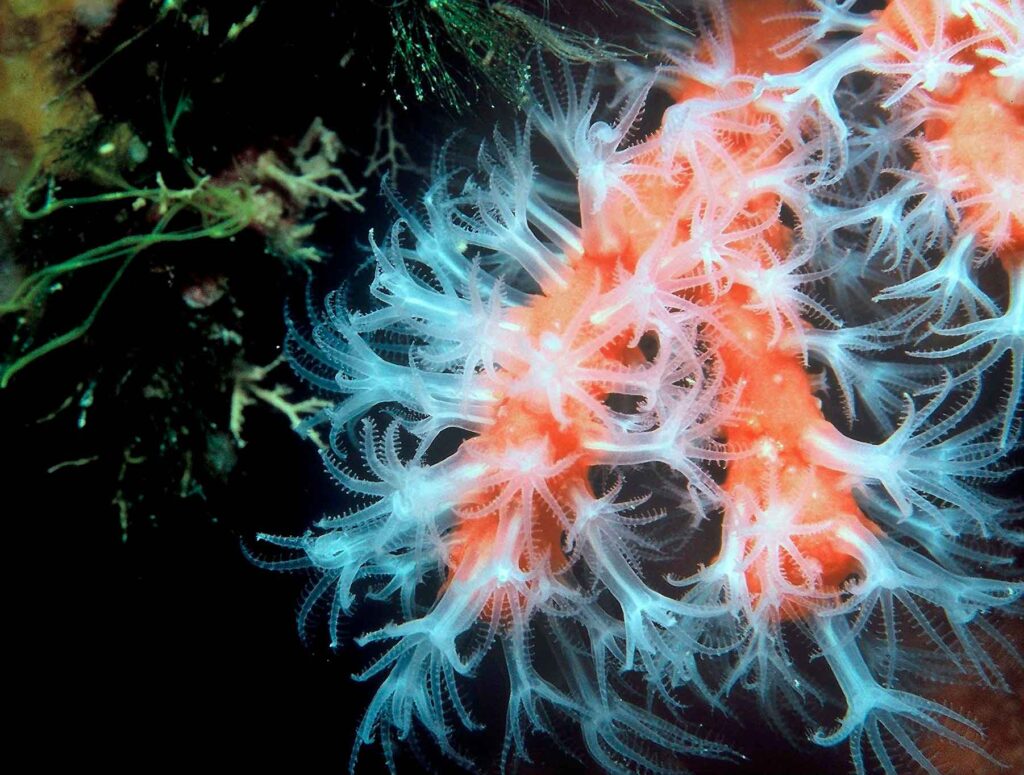
Red precious coral
Corallium rubrum
MAXIMUM LENGTH

50 cm
FEEDING

Carnivore
ACTIVITY

Diurnal
Red precious coral is a cnidarium or colonial celenterium; a branch of coral is formed by many animals (polyps) that make up a colony. The branches are red and the small polyps are white with 8 arms.
Its maximum size is 50 cm.
Like all corals, it is a colonial animal. It is a series of small polyps that build a chalky structure to protect themselves.
It feeds on plankon by filtration.
Reproduction is mixed; first the ovules are fertilised and then the females let go of the larvae, which swim freely. These will fix to the substrate and form a new colony, which will grow by asexual reproduction by gemmation.
This coral is found at medium depths, between 50 and 200 m, in certain permanent currents, dark caves and cracks.
The colonies of red coral are currently practically destroyed and in full regression due to its over-exploitation. In Catalonia, red coral is a protected species.
Interesting facts
For centuries red coral was a species highly appreciated and little known. Everybody thought it was a mineral or a plant. The oldest finding is the skeleton of a man with small coral pearls found in 1908 in Wiesbaden (Germany). He is calculated as being some 25,000 years old, and coral decorations were also found in the tombs of the pharoahs. The Romans, for instance, used it as a talisman to combat different illnesses. The Christian religion also used red as a symbol of the blood of Christ’s sacrifice; and in the middle ages it was customary to carry pieces of coral in a bag to frighten off bad spirits and witches. Until the early 19th century, red coral was believed to be a petrified plant that was always flowering.
Distribution
Conservation status
